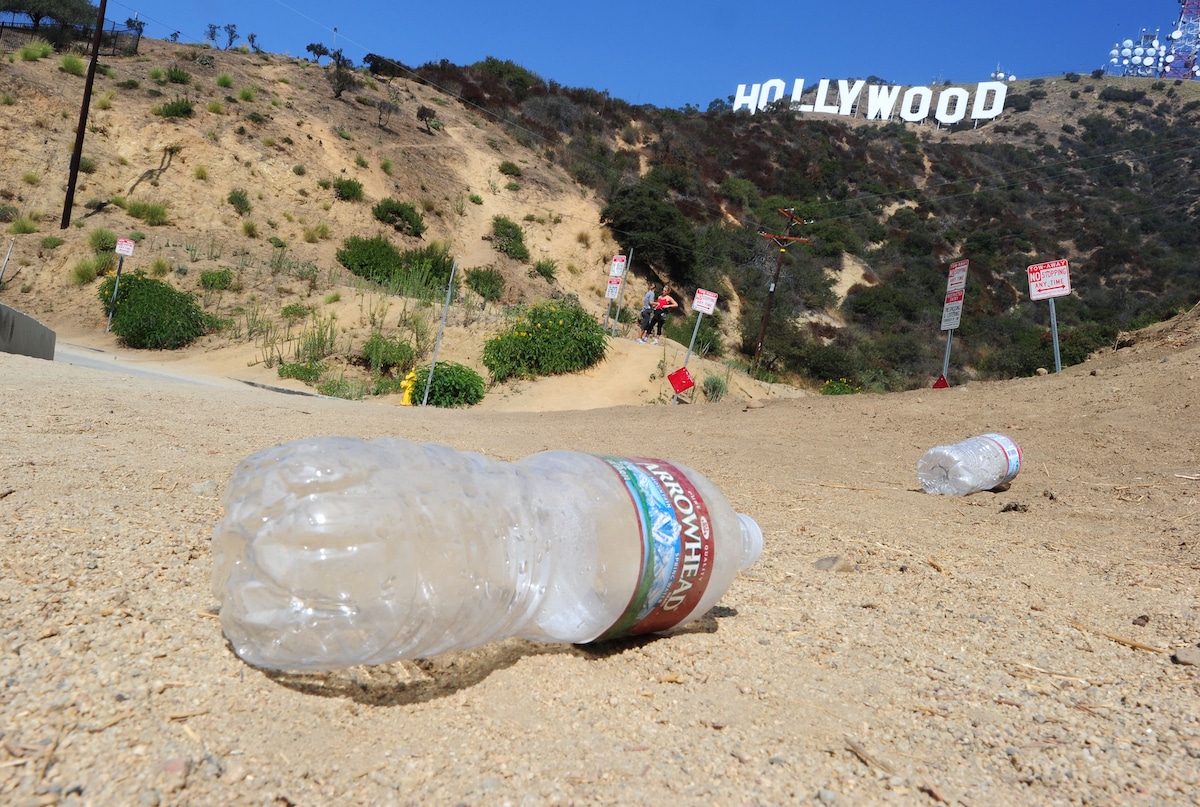New California Law Could Eliminate 23 Million Tons of Plastic in 10 Years

 Why you can trust us
Why you can trust us
Founded in 2005 as an Ohio-based environmental newspaper, EcoWatch is a digital platform dedicated to publishing quality, science-based content on environmental issues, causes, and solutions.
A newly signed law in California, SB54, is set to reduce amounts of plastic waste, improve recycling rates, and place more responsibility on producers rather than consumers to curb plastic pollution.
The new law requires a 25% decrease in single-use plastics entering the market over the next 10 years, and nearly half of that reduction must come from eliminating plastic packaging or switching to reusable, refillable systems rather than swapping plastic for other single-use materials, like paper. According to Ocean Conservancy, this requirement could prevent an estimated 23 million tons of plastic by 2032, or about 26 times the weight of the Golden State Bridge.
Additional mandates include requiring all single-use packaging and foodware, not just plastic, to be recyclable or compostable by 2032, reaching a 30% recycling rate for plastics by 2028 and 65% recycling rate for plastics by 2032, and providing hundreds of millions of dollars in funds to support communities and restore ecosystems that face the worst impacts of plastic pollution.
“It’s hard to capture how momentous this feels,” Anja Brandon, U.S. plastics policy analyst at Ocean Conservancy and a principal contributor to the bill text, said in a statement. “The United States is the number-one generator of plastic waste in the world and a top contributor to the ocean plastics crisis. We can’t solve this problem without U.S. leadership, and by passing this law, California is righting the ship. This is a huge win for our ocean.”
As of 2021, the U.S. plastic recycling rate is an estimated 5% to 6%, and in California, plastic recycling rates are below 5%. The bill sets a target for a major increase in recycling, paired with mandates focusing on reusable alternatives to plastic packaging and foodware in the state.
The bill, also called the Plastic Pollution Producer Responsibility Act, passed the State Assembly 67-2 and the State Senate 29-0. California Governor Gavin Newsom signed the bill into law on June 30. The law passed shortly after a similar ballot measure was withdrawn, which would have taken longer to pass and implement.
California is the fourth state to pass such a law, following Colorado, Maine and Oregon.
“Today we make history; tomorrow we focus on ensuring our SB 54 goals to reduce plastic pollution are met,” Assemblywoman Luz Rivas said in a statement.
The extended producer responsibility provisions in SB54 will go into effect beginning January 1, 2027.
Subscribe to get exclusive updates in our daily newsletter!
By signing up, you agree to the Terms of Use and Privacy Policy & to receive electronic communications from EcoWatch Media Group, which may include marketing promotions, advertisements and sponsored content.

 233k
233k  41k
41k  Subscribe
Subscribe 




